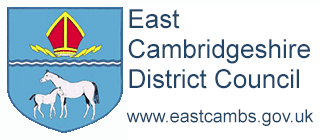Check if your Tax Code is Correct
Your tax code is used by your employer or pension provider to work out how much Income Tax to take from your pay or pension.
HM Revenue and Customs (HMRC) will tell them which code to use to collect the right tax.
You can check your Income Tax online (external link) to see:
what your tax code is
if your tax code has changed
how your tax code is worked out
how much tax you’re likely to pay
You can also tell HMRC about a change that affects your tax code (external link).
What your Tax Code Means
Your tax code will normally start with a number and end with a letter.
1250L is the tax code currently used for most people who have one job or pension.
How the Numbers are Worked Out
The numbers in your tax code tell your employer or pension provider how much tax-free income you get in that tax year.
HMRC works out your tax-free Personal Allowance (external link).
Income that you have not paid tax on (such as untaxed interest or part-time earnings) and the value of any benefits from your job (external link) (such as a company car) are added up.
The income that you have not paid tax on is taken away from your Personal Allowance. What’s left is the tax-free income you are allowed in a tax year.
The last digit in the tax-free income amount is removed.
What the Letters Mean
Letters in your tax code refer to your situation and how it affects your Personal Allowance (external link).
L You are entitled to the standard tax-free Personal Allowance (external link)
M Marriage Allowance (external link): you’ve received a transfer of 10% of your partner’s Personal Allowance
N Marriage Allowance (external link): you’ve transferred 10% of your Personal Allowance to your partner
T Your tax code includes other calculations to work out your Personal Allowance
0T Your Personal Allowance (external link) has been used up, or you’ve started a new job and your employer does not have the details they need to give you a tax code
BR All your income from this job or pension is taxed at the basic rate (external link) (usually used if you’ve got more than one job or pension)
D0 All your income from this job or pension is taxed at the higher rate (external link) (usually used if you’ve got more than one job or pension)
D1 All your income from this job or pension is taxed at the additional rate (external link) (usually used if you’ve got more than one job or pension)
NT You’re not paying any tax on this income
S Your income or pension is taxed using the rates in Scotland (external link)
S0T Your Scottish Personal Allowance (external link) has been used up, or you’ve started a new job and your employer does not have the details they need to give you a tax code
SBR All your income from this job or pension is taxed at the basic rate in Scotland (external link) (usually used if you’ve got more than one job or pension)
SD0 All your income from this job or pension is taxed at the intermediate rate in Scotland (external link)(usually used if you’ve got more than one job or pension)
SD1 All your income from this job or pension is taxed at the higher rate in Scotland (external link) (usually used if you’ve got more than one job or pension)
SD2 All your income from this job or pension is taxed at the top rate in Scotland (external link) (usually used if you’ve got more than one job or pension)
C Your income or pension is taxed using the rates in Wales (external link)
C0T Your Welsh Personal Allowance (external link) has been used up, or you have started a new job and your employer does not have the details they need to give you a tax code
CBR All your income from this job or pension is taxed at the basic rate in Wales (external link) (usually used if you’ve got more than one job or pension)
CD0 All your income from this job or pension is taxed at the higher rate in Wales (external link) (usually used if you’ve got more than one job or pension)
CD1 All your income from this job or pension is taxed at the additional rate in Wales (external link) (usually used if you’ve got more than one job or pension)
If your Tax Code has ‘W1’ or ‘M1’ at the End
These are emergency tax codes (external link).
If your Tax Code has a ‘K’ at the Beginning
Tax codes with ‘K’ at the beginning mean you have income that is not being taxed another way and it’s worth more than your tax-free allowance.
For most people, this happens when you are:
paying tax you owe from a previous year through your wages or pension
getting benefits you need to pay tax on - these can be state benefits (external link) or company benefits (external link)
Your employer or pension provider takes the tax due on the income that has not been taxed from your wages or pension - even if another organisation is paying the untaxed income to you.
Employers and pension providers cannot take more than half your pre-tax wages or pension when using a K tax code.
